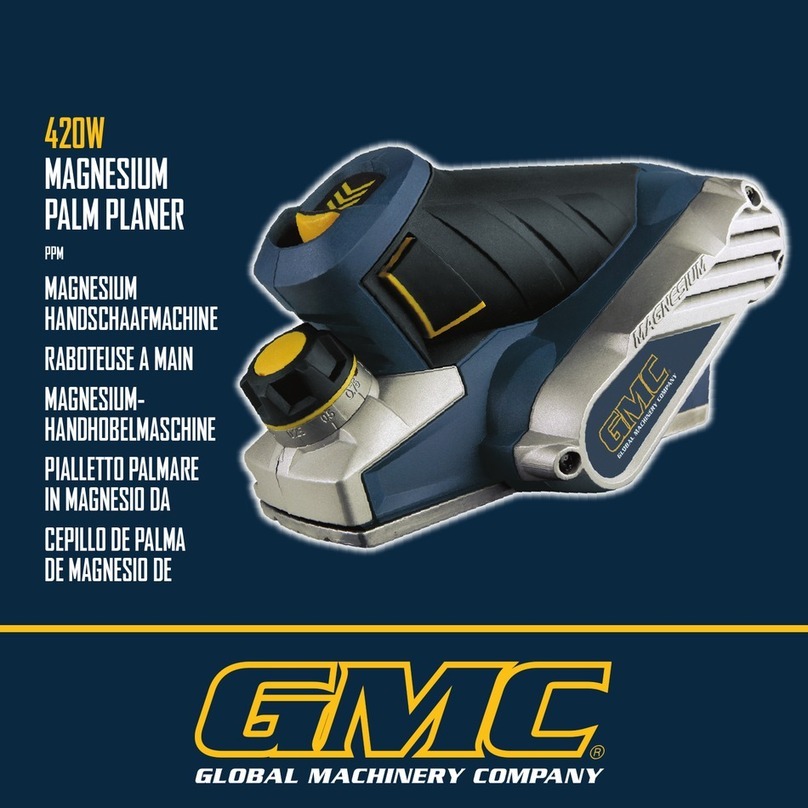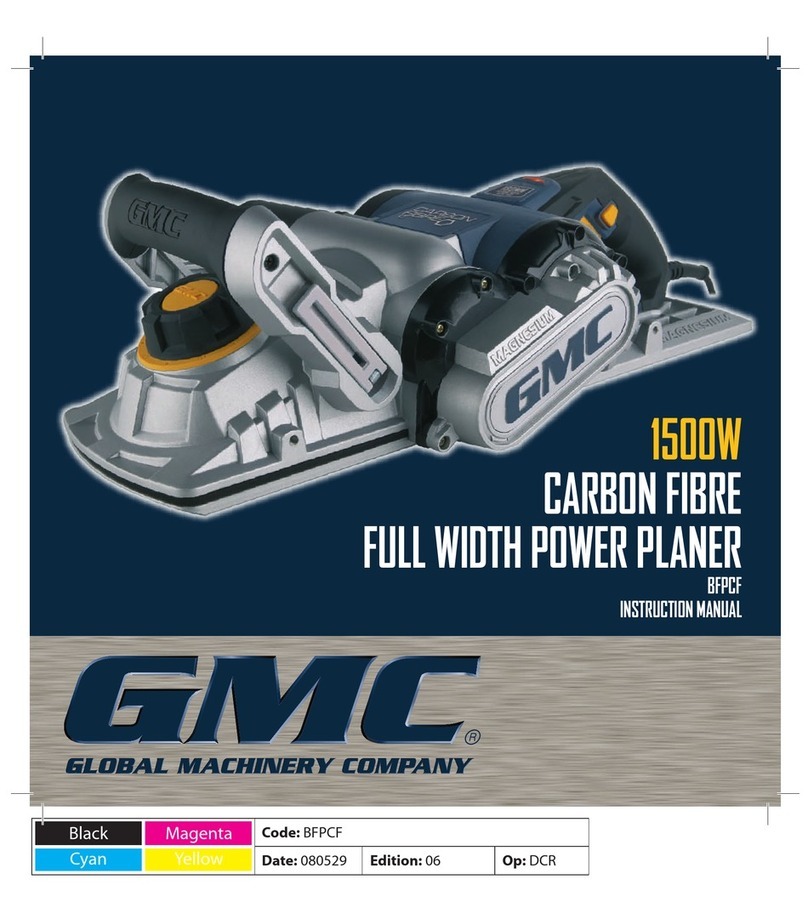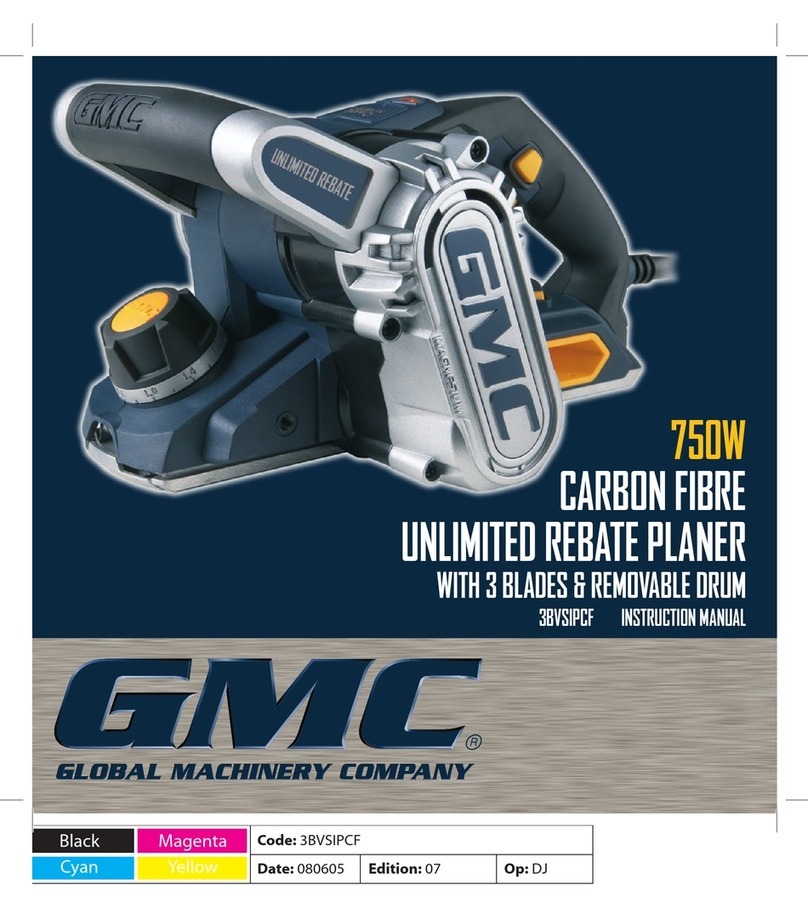GB
5
b. Do not use the power tool if the switch does not turn
it on and off. Any power tool that cannot be controlled
with the switch is dangerous and must be repaired.
c. Disconnect the plug from the power source before
making any adjustments, changing accessories, or
storing power tools. Such preventive safety measures
reduce the risk of starting the power tool accidentally.
d. Store idle power tools out of the reach of children and
do not allow persons unfamiliar with the power tool
or these instructions to operate the power tool. Power
tools are dangerous in the hands of untrained users.
e. Always unplug your power tool when leaving
unattended. Such preventative safety measures
reduce the risk of starting the power tool accidentally
by untrained users.
f. Maintain power tools. Check for misalignment or
binding of moving parts, breakage of parts and
any other condition that may affect the power tools
operation. If damaged, have the power tool repaired
before use. Many accidents are caused by poorly
maintained power tools.
g. Keep cutting tools sharp and clean. Properly
maintained cutting tools with sharp cutting edges are
less likely to bind and are easier to control.
h. Use the power tool, accessories and tool bits etc.,
in accordance with these instructions and in the
manner intended for the particular type of power
tool, taking into account the working conditions and
the work to be performed. Use of the power tool for
operations different from those intended could result in
a hazardous situation.
5. SERVICE
a. Have your power tool serviced by a qualified repair
person using only identical replacement parts.
This will ensure that the safety of the power tool is maintained.
Additional safety rules for electric planers
• Wait for the cutter to stop before setting the tool down.
An exposed cutter may engage the surface leading to
possible loss of control and serious injury.
• Fully unwind cable drum extensions to avoid
potential overheating.
• When an extension cable is required, you must ensure
that it has the right ampere rating for your power tool and
is in safe electrical condition.
• Ensure your mains supply voltage is the same as your
tool rating plate voltage.
• After long working periods, external metal parts and
accessories could be hot.
• If possible, always use clamps or a vice to hold your work.
• Always switch off before you put the planer down.
• Do not force the planer: let the tool do the work at
a reasonable speed. Overloading will occur if too
much pressure is applied and the motor slows resulting
in inefficient planing and possible damage to the
planer motor.
• Always use a dust extraction system where possible.
• Rags, cloths, cord, string and the like should never be
left around the work area.
• Remove all nails, screws and other objects from the
workpiece. You can damage the blade and the tool by
cutting into a nail or other foreign object. It can also
present a safety hazard.
• Handle the blades very carefully.
• Be sure that the blade installation bolts are securely
tightened before operation.
• Always wear eye and ear protection and use a
dust mask.
• Hold the tool firmly with both hands.
• Keep hands away from rotating parts.
• Before using the tool on an actual workpiece, switch
on and let it run for a while. Watch for vibration or
wobbling that could indicate poor installation or a
poorly balanced blade.
• Make sure that a blade is not in contact with the
workpiece when you switch the machine on.
































